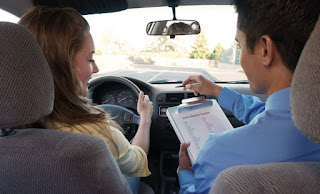Teens Behind the Wheel: Laws & Requirements
Getting a driver’s license is a major milestone for many teenagers, symbolizing newfound freedom and responsibility. However, it's also a time when safety and adherence to laws are crucial. Understanding the specific laws and requirements for teenage drivers is essential to ensure they are prepared and responsible on the road. Here's a comprehensive guide to help you navigate the legal landscape for teen drivers.
1. Graduated Driver Licensing (GDL) Programs
Many states in the U.S. have implemented Graduated Driver Licensing (GDL) programs to gradually introduce young drivers to the road. GDL programs typically have three stages:
Learner’s Permit
Age Requirement: Most states require teens to be at least 15 or 16 years old.
Supervised Driving: Teens must practice driving under the supervision of a licensed adult, usually a parent or guardian.
Instructional Hours: Many states require a certain number of supervised driving hours, including nighttime driving.
Duration: The learner’s permit phase typically lasts 6 to 12 months.
Intermediate/Provisional License
Age Requirement: Usually 16 to 18 years old.
Driving Restrictions: This stage often includes restrictions such as no nighttime driving (typically between 10 p.m. and 5 a.m.) and limited or no passengers under a certain age.
Accident and Violation-Free Period: Teens may need to maintain a clean driving record for a specified period before advancing to the next stage.
Full/Unrestricted License
Age Requirement: Generally 18 years old or after holding an intermediate license for a certain period.
Removal of Restrictions: Upon reaching this stage, teens usually receive a full license without restrictions, provided they have maintained a clean driving record.
2. Driver Education Requirements
Driver education is a crucial component of preparing teens for the road. Requirements vary by state but typically include:
Classroom Instruction
Topics Covered: Traffic laws, road signs, defensive driving techniques, and the effects of alcohol and drugs on driving.
Duration: Many states require a minimum number of hours, often around 30 hours of classroom instruction.
Behind-the-Wheel Training
Practical Driving Experience: Hands-on driving practice with a certified instructor.
Duration: States often mandate a specific number of hours, usually ranging from 6 to 12 hours.
Online Courses
Flexibility: Some states allow online driver education courses, offering flexibility for busy teens.
Accreditation: Ensure the online course is state-approved and meets all requirements.
3. Parental Involvement and Responsibility
Parents play a significant role in their teen’s driver education:
Supervised Driving Practice
Tracking Hours: Parents are often required to log supervised driving hours and ensure their teen practices in various conditions (e.g., nighttime, adverse weather).
Mentorship: Parents should model good driving behavior and reinforce safe driving habits.
Parental Consent
Signing Permit Applications: In most states, parents or guardians must sign their teen’s permit application, acknowledging responsibility for the teen’s driving.
Insurance Requirements: Parents need to add their teen to their auto insurance policy, which may affect premiums.
4. State-Specific Laws and Requirements
Laws and requirements can vary significantly by state. Here are some common elements to be aware of:
Minimum Age and Waiting Periods
Learner’s Permit Age: Typically 15-16 years old.
Intermediate License Age: Usually 16-18 years old.
Full License Age: Generally 18 years old.
Passenger and Curfew Restrictions
Passenger Limits: Often no passengers under 20 years old for the first 6-12 months.
Nighttime Driving: Restrictions typically between 10 p.m. and 5 a.m.
Zero Tolerance for Alcohol
Strict Penalties: Many states have zero-tolerance laws for drivers under 21, meaning any detectable blood alcohol concentration (BAC) can result in severe penalties.
Texting and Phone Use
Ban on Electronic Devices: Most states prohibit texting and restrict phone use for novice drivers.
5. Tips for Teen Drivers
Practice Defensive Driving
Stay Alert: Always be aware of your surroundings and anticipate potential hazards.
Maintain Safe Distances: Keep a safe following distance to allow time to react to sudden stops.
Avoid Distractions
No Phones: Avoid using your phone while driving. Consider using apps that block incoming texts and calls while driving.
Focus on the Road: Keep your attention on driving, not on passengers or other distractions.
Follow Traffic Laws
Obey Speed Limits: Adhere to posted speed limits and adjust speed according to road conditions.
Use Seat Belts: Always wear your seat belt and ensure all passengers do the same.



Comments
Post a Comment